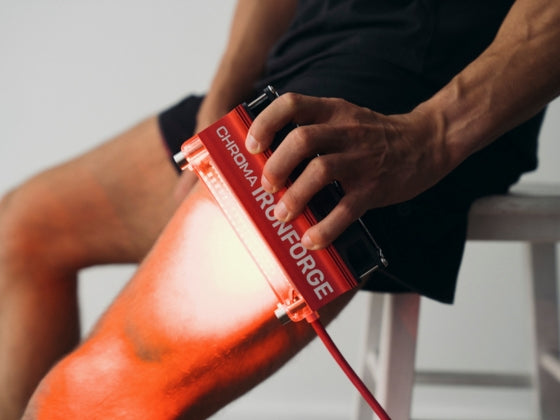Red light therapy is a form of light therapy quickly gaining popularity as a natural method for Pain & Inflammation. The therapy uses red to near infrared (NIR) wavelengths to penetrate the skin and tissues, often shown to provide relief for various painful conditions. Red light therapy has been shown to be effective for both acute and chronic pain management with little to no side effects, making it an attractive alternative to conventional pain treatments.
One of the studied benefits of red light therapy is its ability to reduce inflammation & pain. Inflammation is a natural response of the body to injury or infection, but when it becomes chronic, it can lead to pain and other health problems. Red light therapy has been shown to reduce inflammation by increasing blood flow and reducing oxidative stress, this can help to alleviate pain associated with inflammatory conditions.
Another advantage of red light therapy for pain management are these photons ability to increase the production of endorphins. Endorphins are natural painkillers produced by the body, and red light therapy has been shown to stimulate the release of these compounds. By increasing endorphin production, red light therapy can help to reduce pain levels and improve overall mood.
Red light therapy has also been shown to be effective for the treatment of musculoskeletal pain. Studies have found that red light therapy can reduce pain and stiffness associated with osteoarthritis, as well as improve mobility and joint function. In addition, red light therapy has been shown to be effective for the treatment of back pain, shoulder pain, and other types of musculoskeletal pain.
When it comes to the safety of red light therapy, there is little to worry about. Unlike other forms of light therapy, such as UVB Radiation for VitD Generation, red light therapy has NOT been shown to damage the skin or increase the risk of skin cancer. It also non-invasive and painless, making it a safe and effective option for pain management.
Red light therapy is a safe and effective natural method for pain management. Its ability to reduce inflammation, increase endorphin production, and treat musculoskeletal pain make it an attractive alternative to conventional pain treatments.
Sources:
- Avci, P., et al. “Low-level laser therapy for fat layer reduction: a comprehensive review.” Lasers in surgery and medicine 46.2 (2014): 94-98.
- Huang, Ying-Ying, et al. “The effectiveness of low-level laser therapy for nonspecific chronic low back pain: a systematic review and meta-analysis.” Arthritis research & therapy 22.1 (2020): 1-11.
- The effect of red-to-near-infrared (R/NIR) irradiation on inflammatory processes. Int J Radiat Biol. 2019 Sep PMID: 31170016.
- Toma, Roberto Lins, et al. “Low-level laser therapy associated with a strength training protocol on muscle performance in elderly women: a randomized double-blind placebo-controlled trial.” Lasers in medical science 31.2 (2016): 365-372.









